PT7701- Intro to Tissue Mechanics
1/217
There's no tags or description
Looks like no tags are added yet.
Name | Mastery | Learn | Test | Matching | Spaced |
|---|
No study sessions yet.
218 Terms
Force
"Push" or "pull".
Vector
Forces are directional — __________________________.
Magnitude
Forces have _____________________________.
Torque
Forces that are applied at a distance away from an axis will produce ______________________________.
Internal forces
Produces from muscle (tendon), ligaments, skin, fascia.
External forces
Gravity, external resistance (weights, bands, etc.), frictional, water (drag).
Parallel forces
- Forces will be summed.
- Direction matters.
- Also called tangential forces.
Perpendicular forces
- Summed to move into a different direction.
- Also called normal forces.
Oblique forces
Have component parts (X-component and Y-component).
Y-component
Rotational force, normal force.
X-component
Compressive or distractive force, tangential force.
Internal torque
If weight is not moving, external torque is equal to _____________________________.
Class 3 levers
Insertion of muscle is closer to joint than external force.
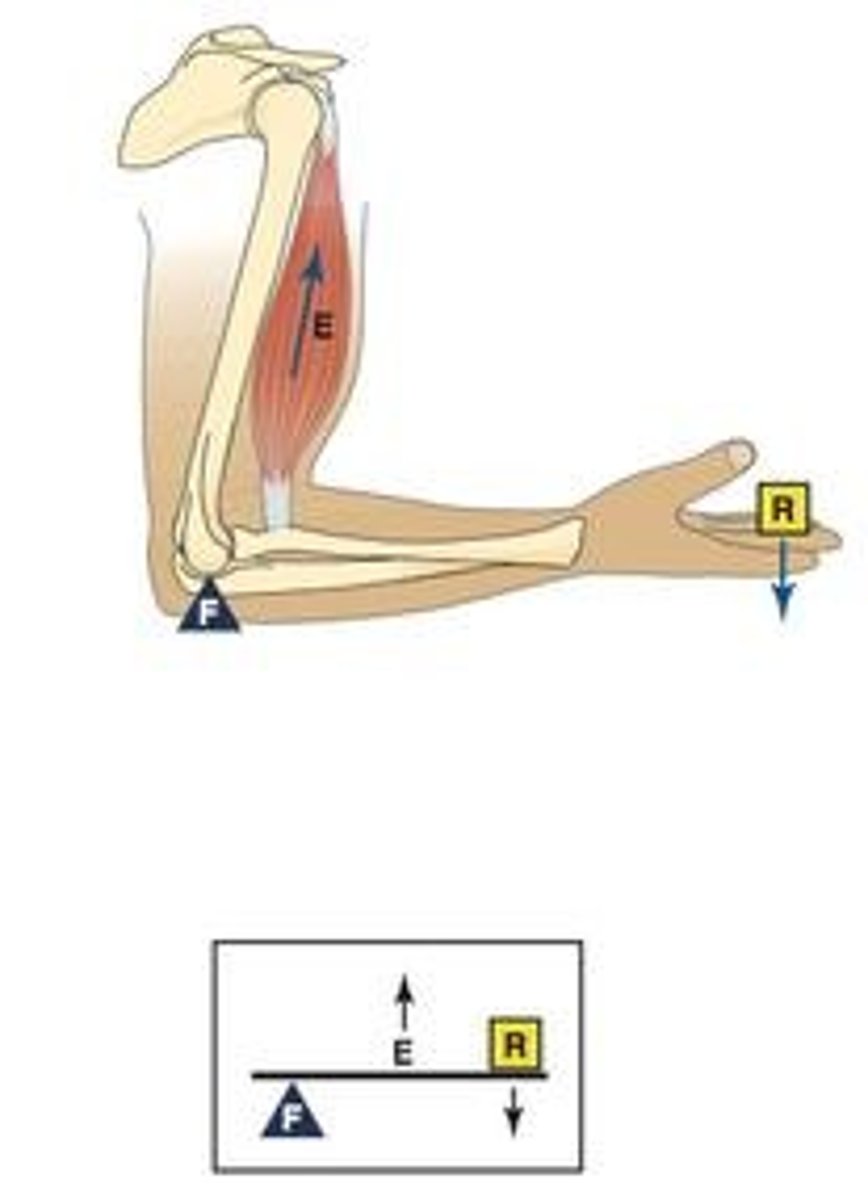
ROM
Majority of levers in human body are class 3 levers, giving us greater _________________________ and speed of contraction.
Deformable
Biological tissues are __________________________ bodies, not rigid bodies.
Unbalanced force
If an object is in static equilibrium, then it will most likely change shape or deform when acted on by an ________________________________.
Duration; temperature
Extent of deformation depends on:
- Applied external force (magnitude, direction, _________________________)
- Characteristics of tissue being deformed (material properties, size and shape of object)
- Environmental factors (_________________________ and humidity)
Tensile force
Pulling
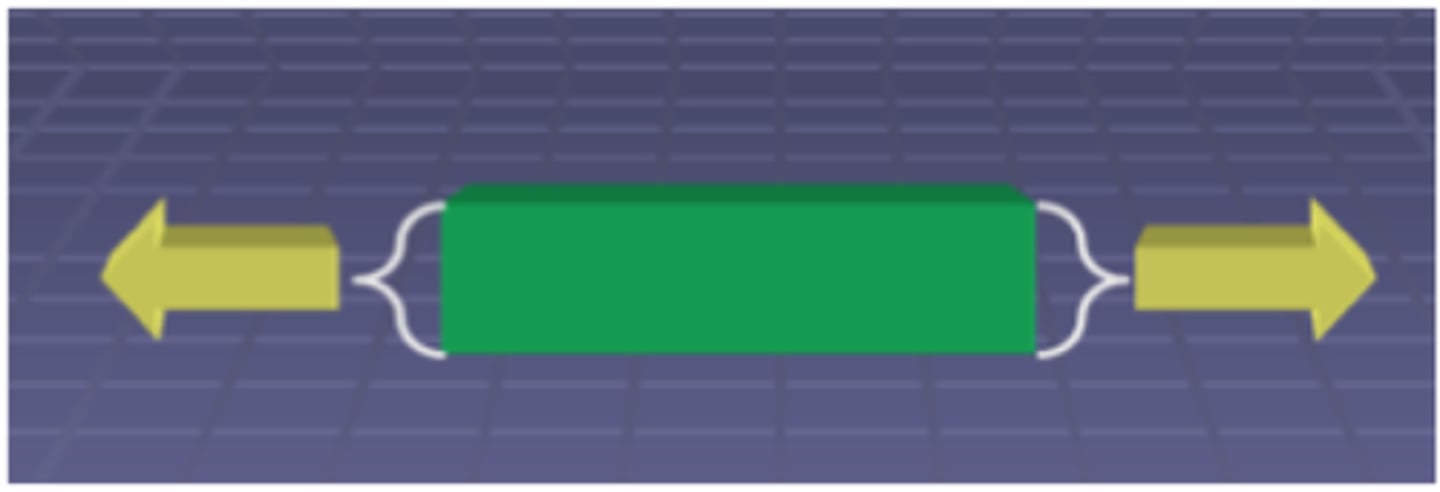
Compressive force
Pushing

Shear force
Force that would go parallel to surface of segment.

Bending force
Tensioning convex side and compressing concave side.

Torsion force
Tensioning external and compressing internal.

Normal forces
Tensile and compressive forces are colinear and known as _____________________________.
Tangential forces
Shear forces are parallel to the object and known as ______________________________.
Injury
Human body doesn't respond to shear force very well, often causes ____________________________.
Shearing
Tension and bending cause __________________________ across all parts of segment.
Normal stress (σ)
Resultant force is perpendicular to the surface of an object.

Force/area
Assuming that the intensity of the external and internal forces are equivalent then the normal stress is equal to the ________________________ of the object.
Newtons/meter²
Normal stress is measured in ____________________________ or Pascal (Pa).
Normal strain (ε)
Measure of degree of deformation.

ε=Δx/x
Normal strain is the ratio of the change in length (increase or decrease) from the resting length.
Percentage
Normal strain may be reported as __________________________ of change.
Shear stress (τ)
Force is applied parallel to the surface of an object, then the internal forces are acting in tangent.
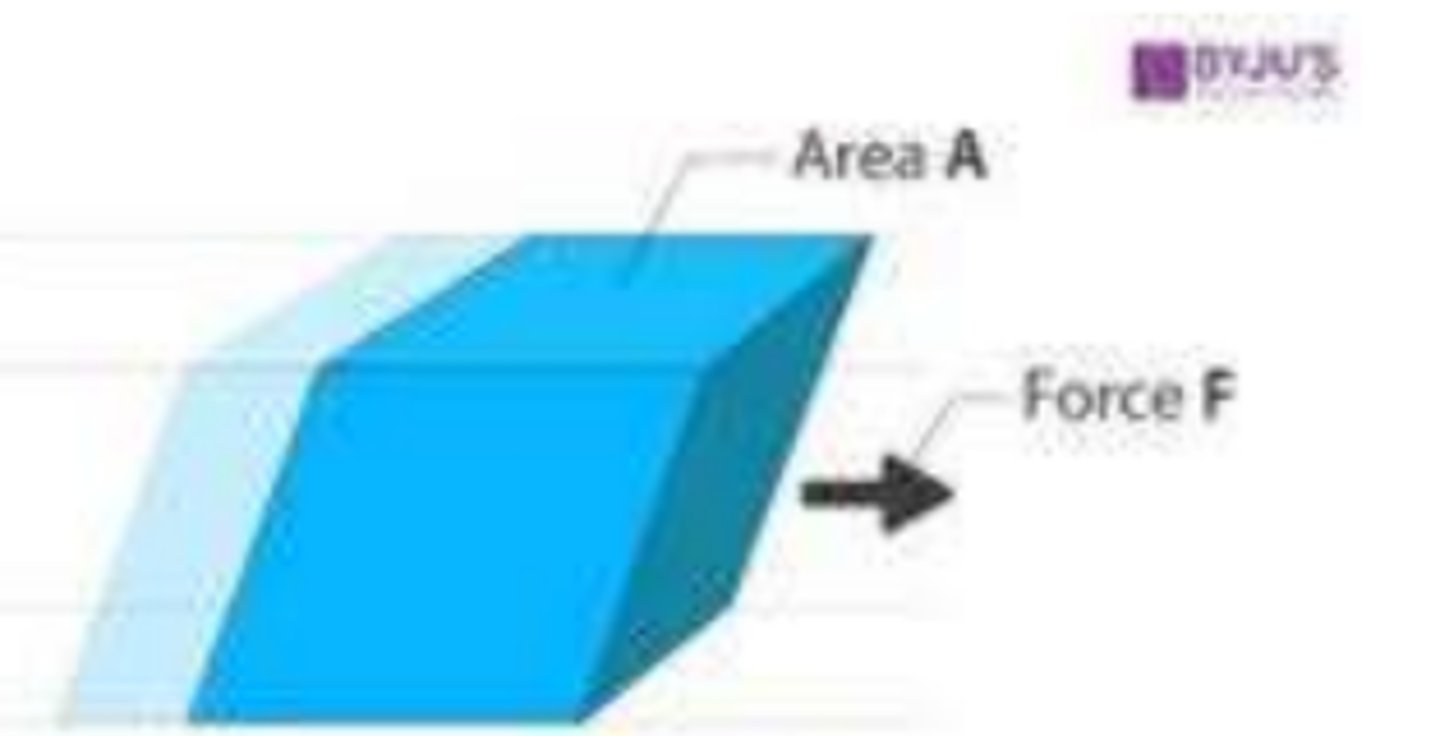
τ=F/A
If the intensity of the force is uniform across the surface of the object, then ___________________________.
- Normal stress for normal force.
- Shear stress for tangential force.
What is difference between shear stress and normal stress?
Shear strain (γ)
Occur due to distortions caused by shear stresses.
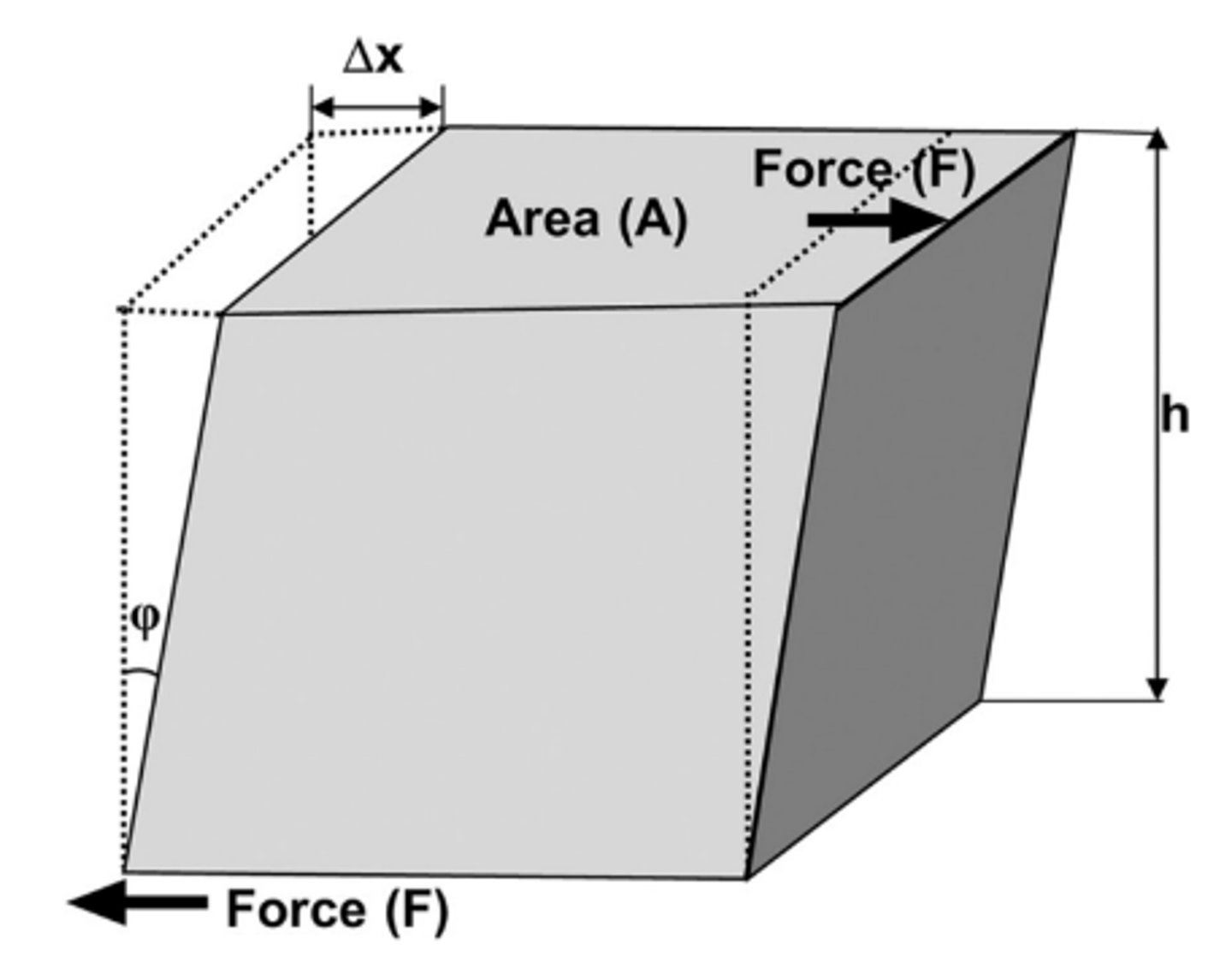
γ= Δx/h
Relative displacement of the object (Φ) caused from shear stress is Δx. Average shear strain is ______________________________.
Stress
Internal resistance to change.
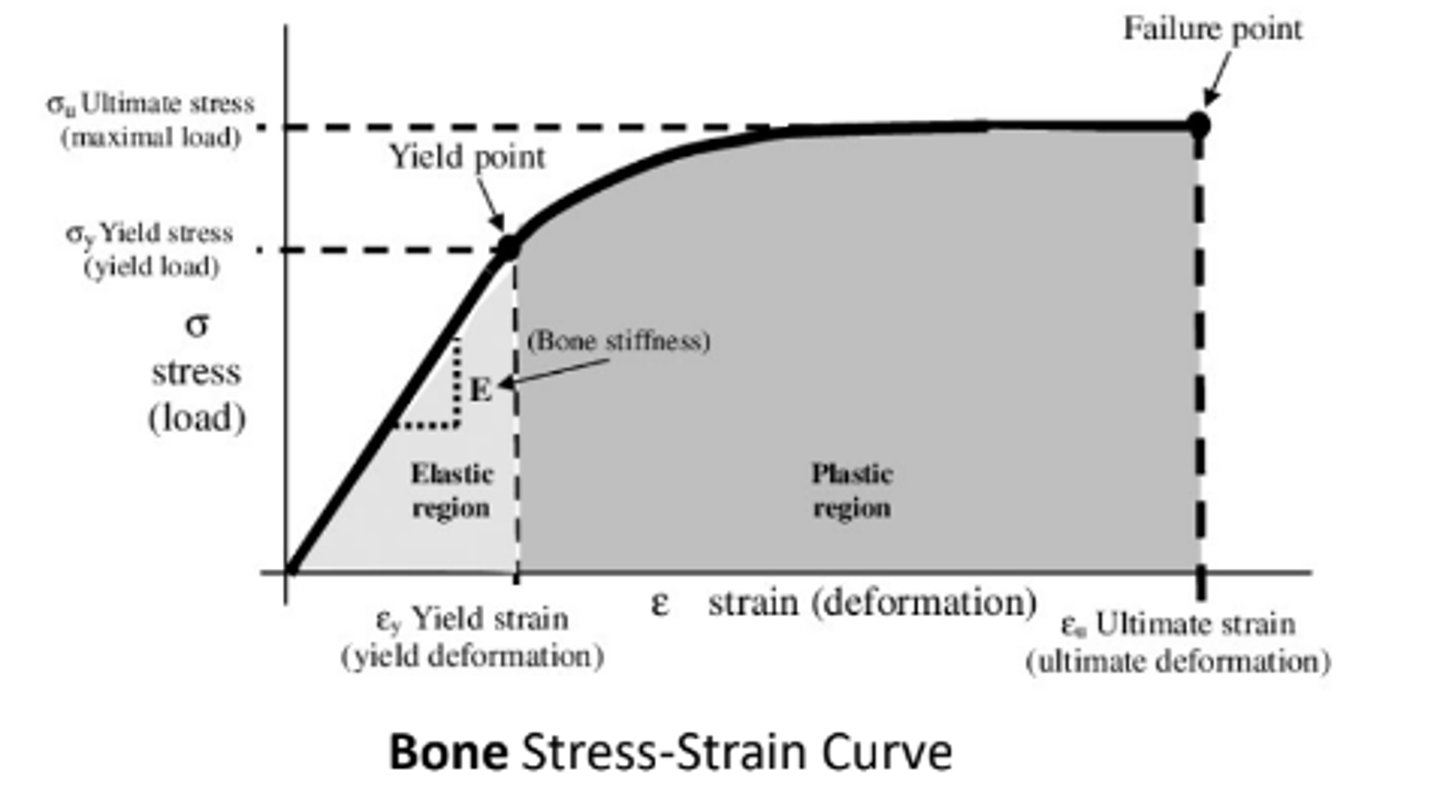
Strain
Percentage (%) of stretch past resting length.
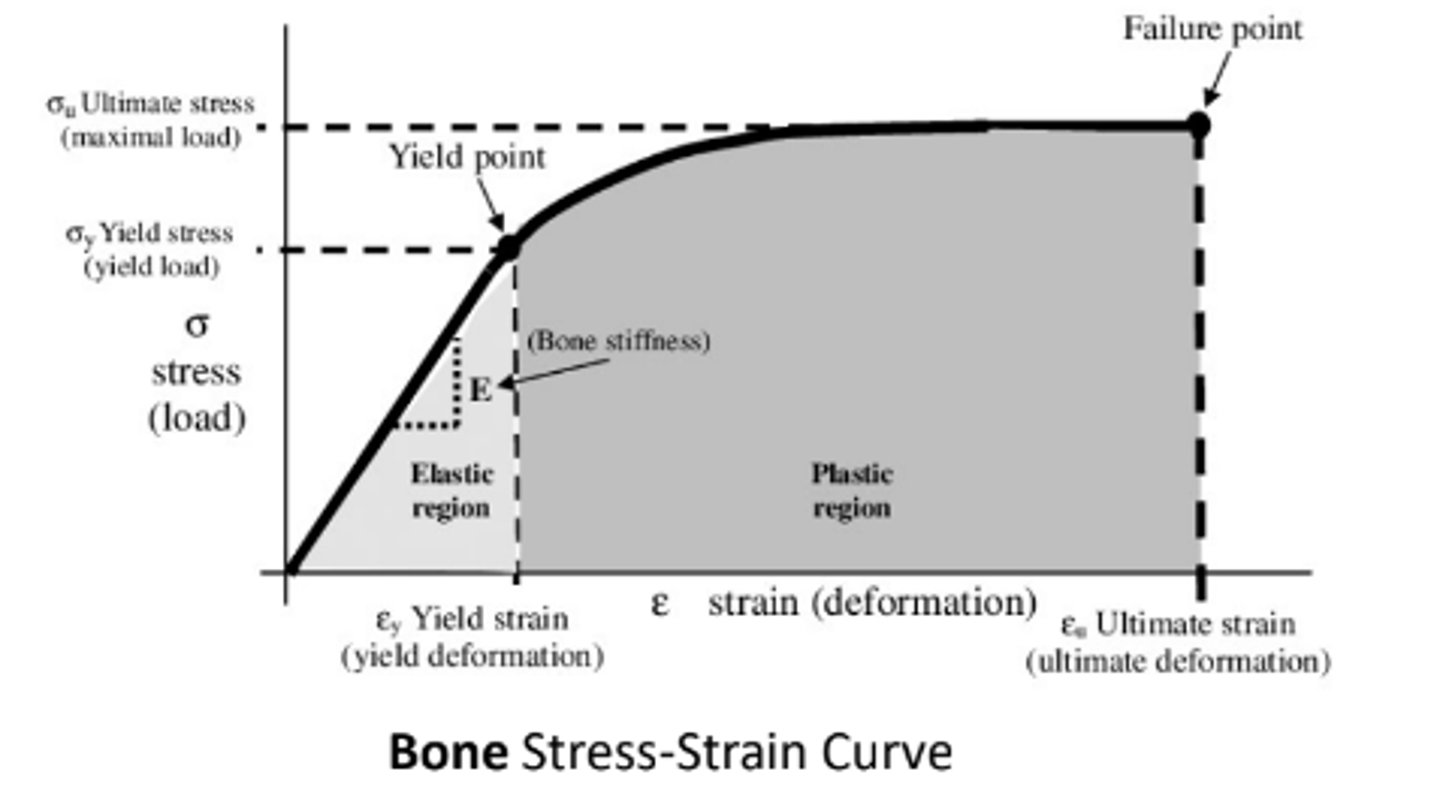
Elastic region
Where the tissue can resist change and will return to resting position once the external force has been removed.
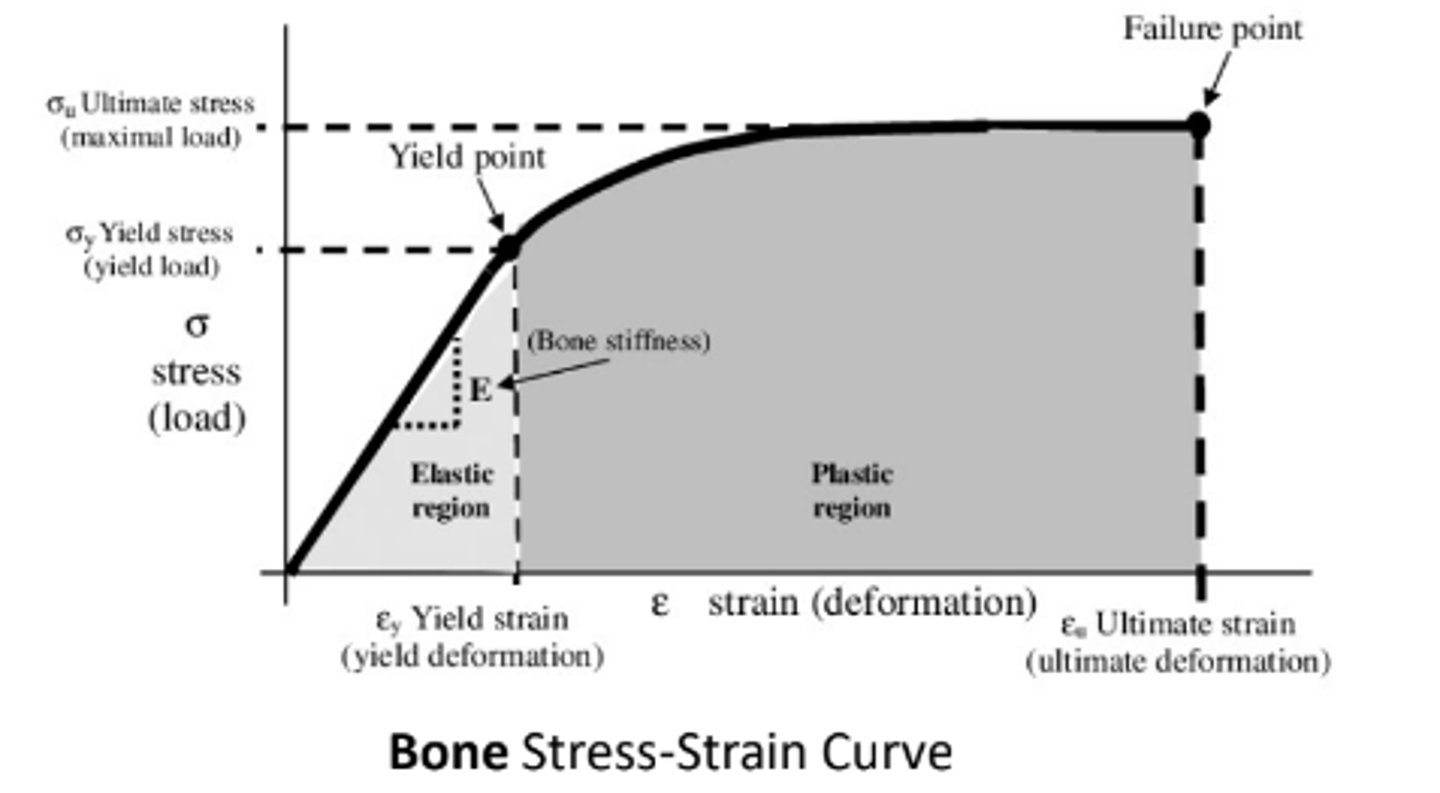
Plastic region
Where there is long-term changes to the tissue.
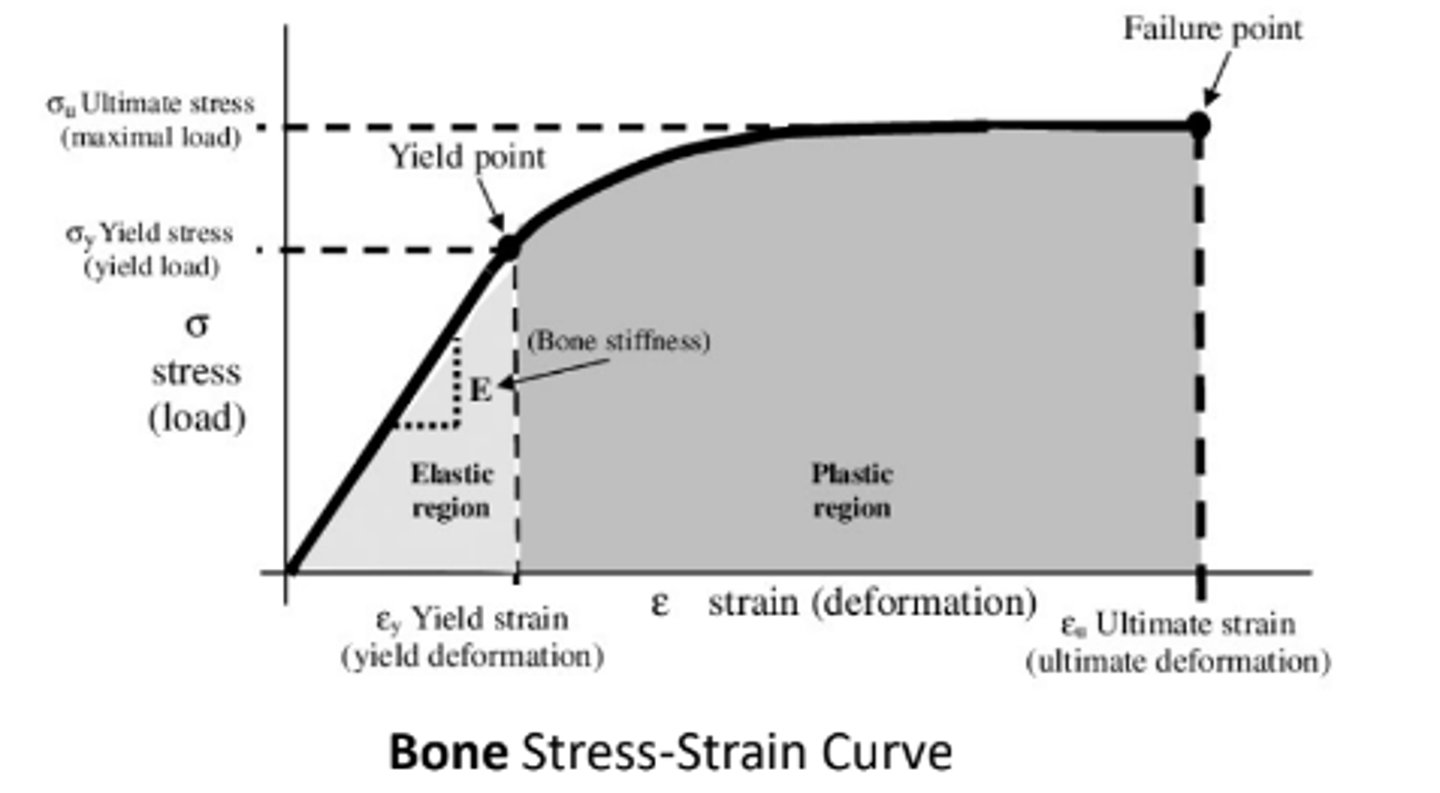
Failure point
All tissues have a ________________________, where the tissue will break/tear.

Origin (O)
Area with no load and no deformation.
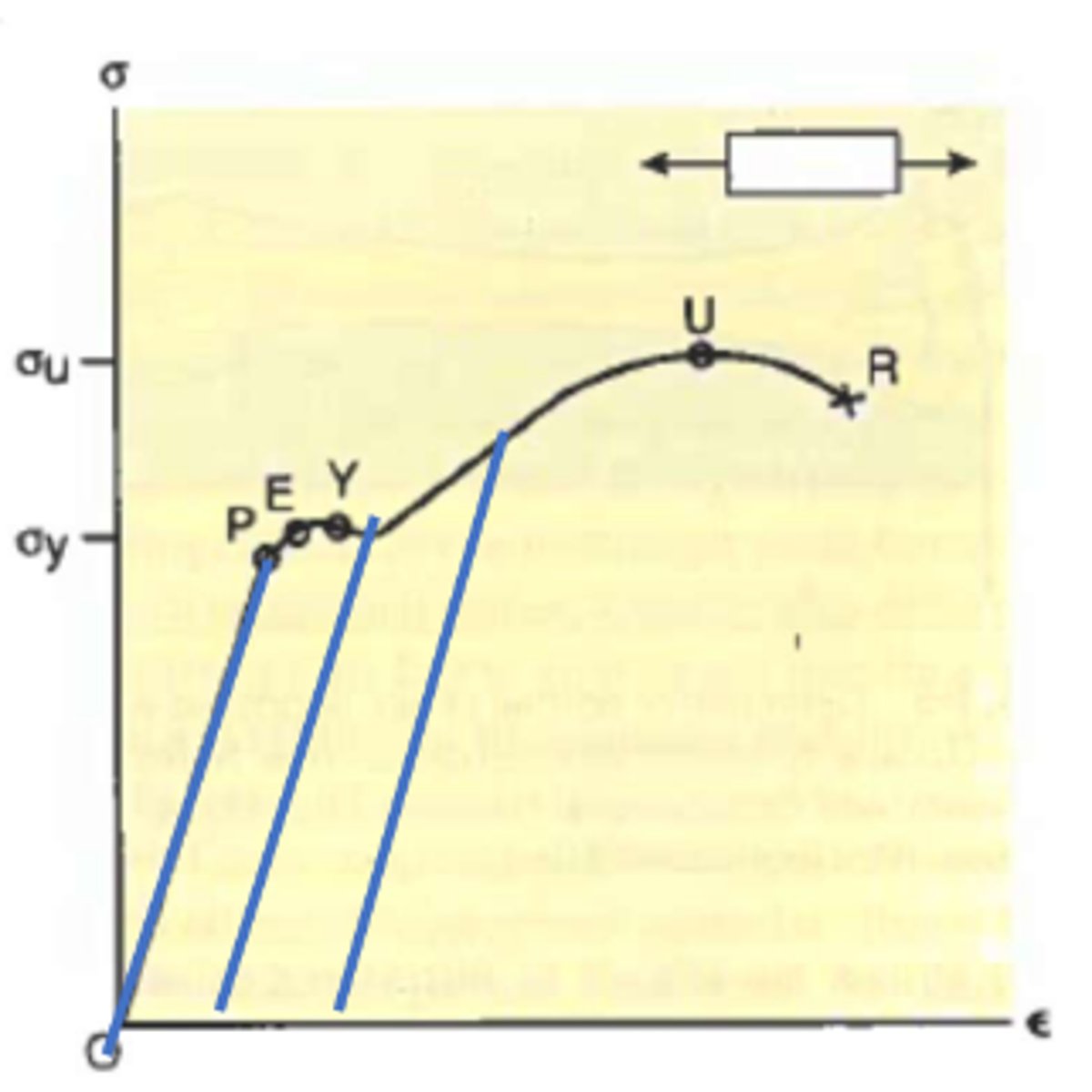
Proportionality limit (P)
Between O and P, the stress and strain are linear (known as Young's modulus).
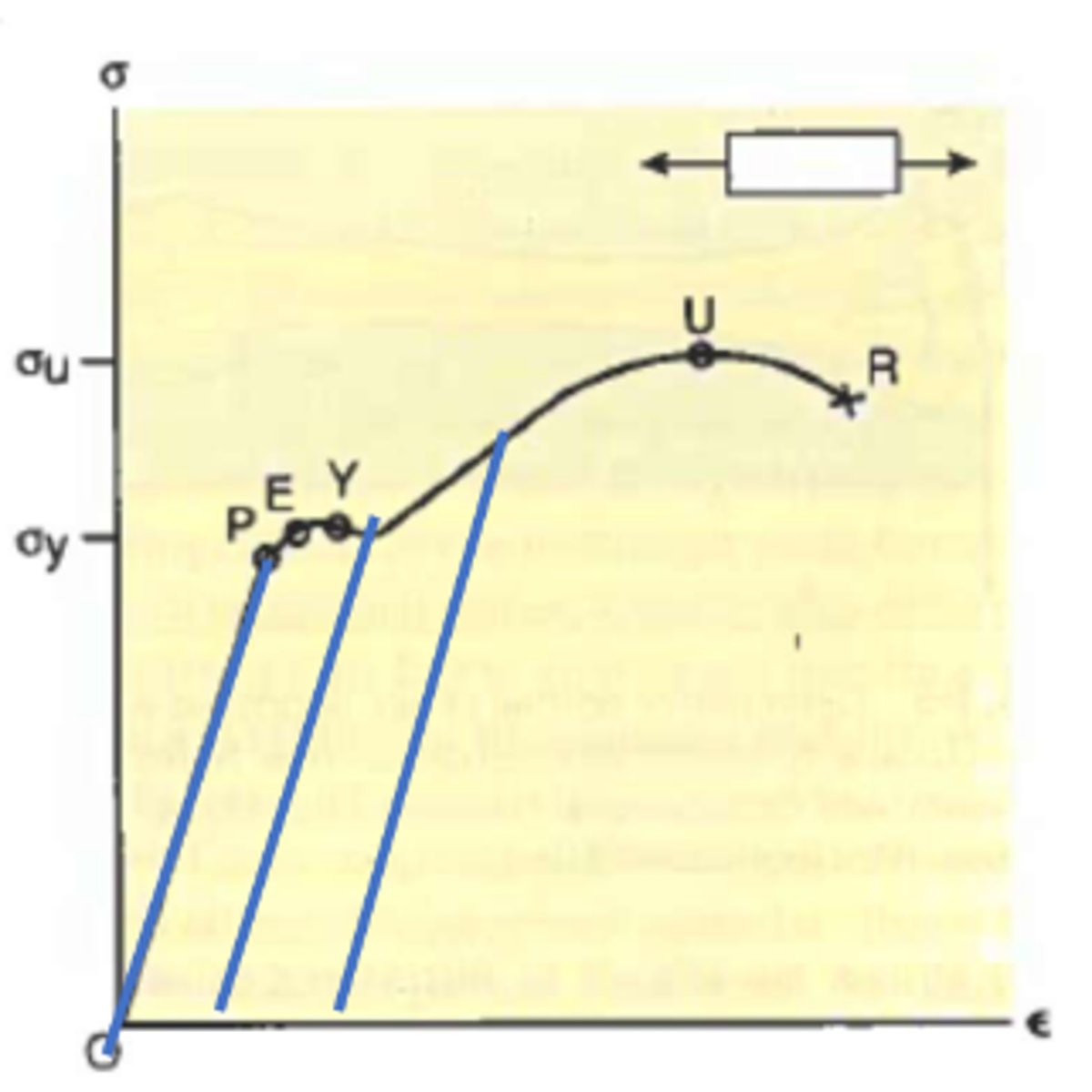
Elastic limit (E)
End of elastic region; often same as yield point.
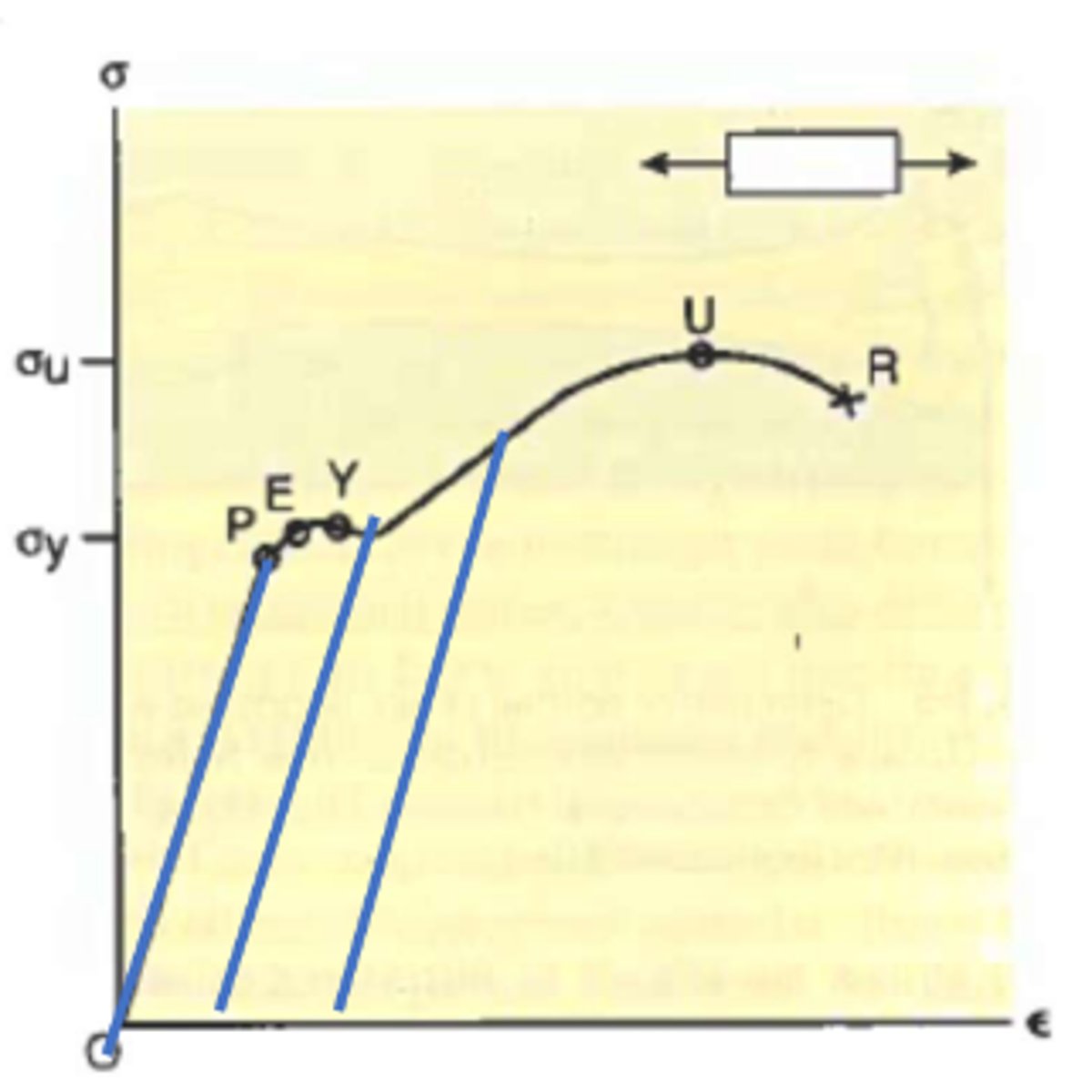
Yield point (Y)
Elongation can occur without an increase in load (this is the start of the plastic region).
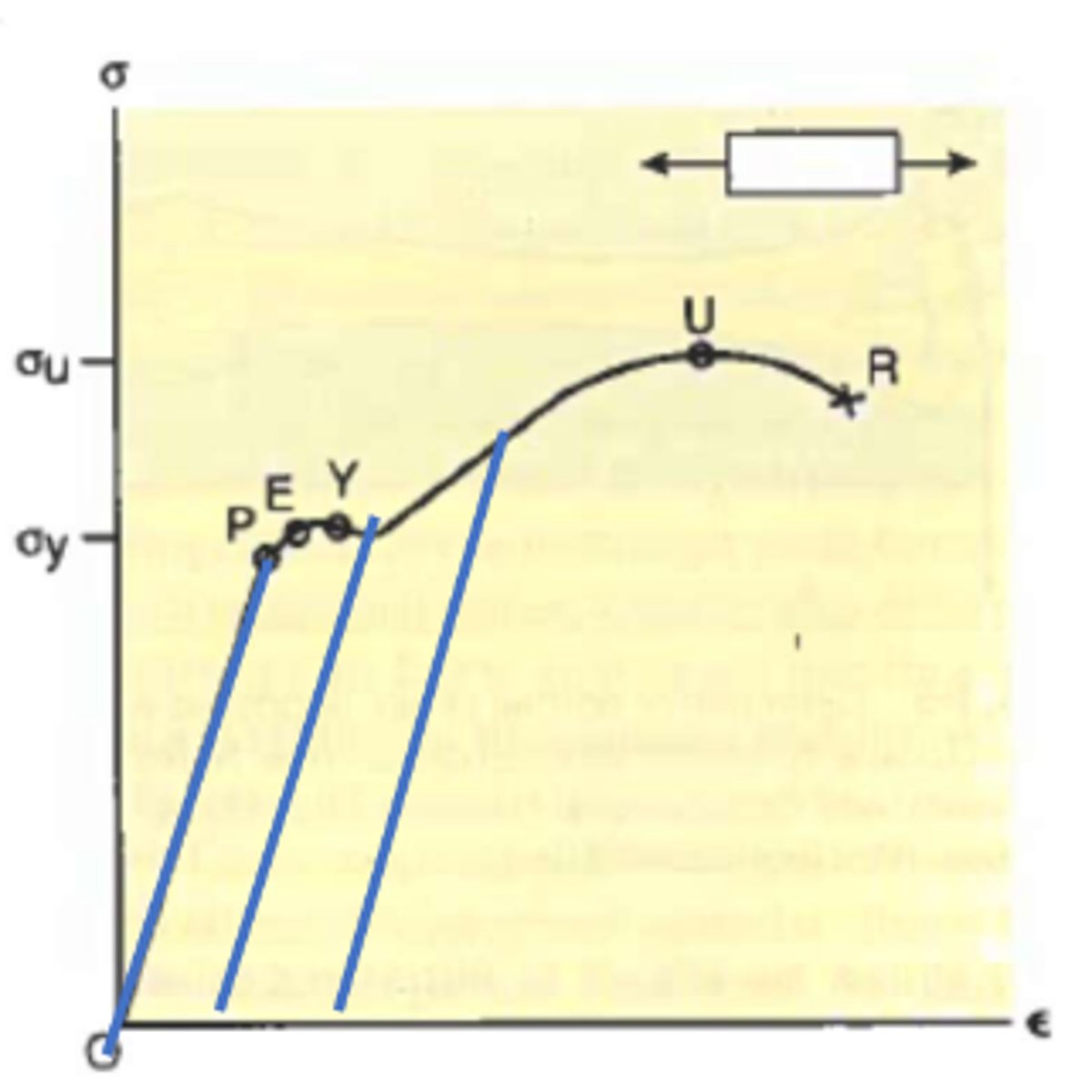
σᵧ
Yield strength of the material; amount of stress tissue can withstand without permanent change in length of tissue.
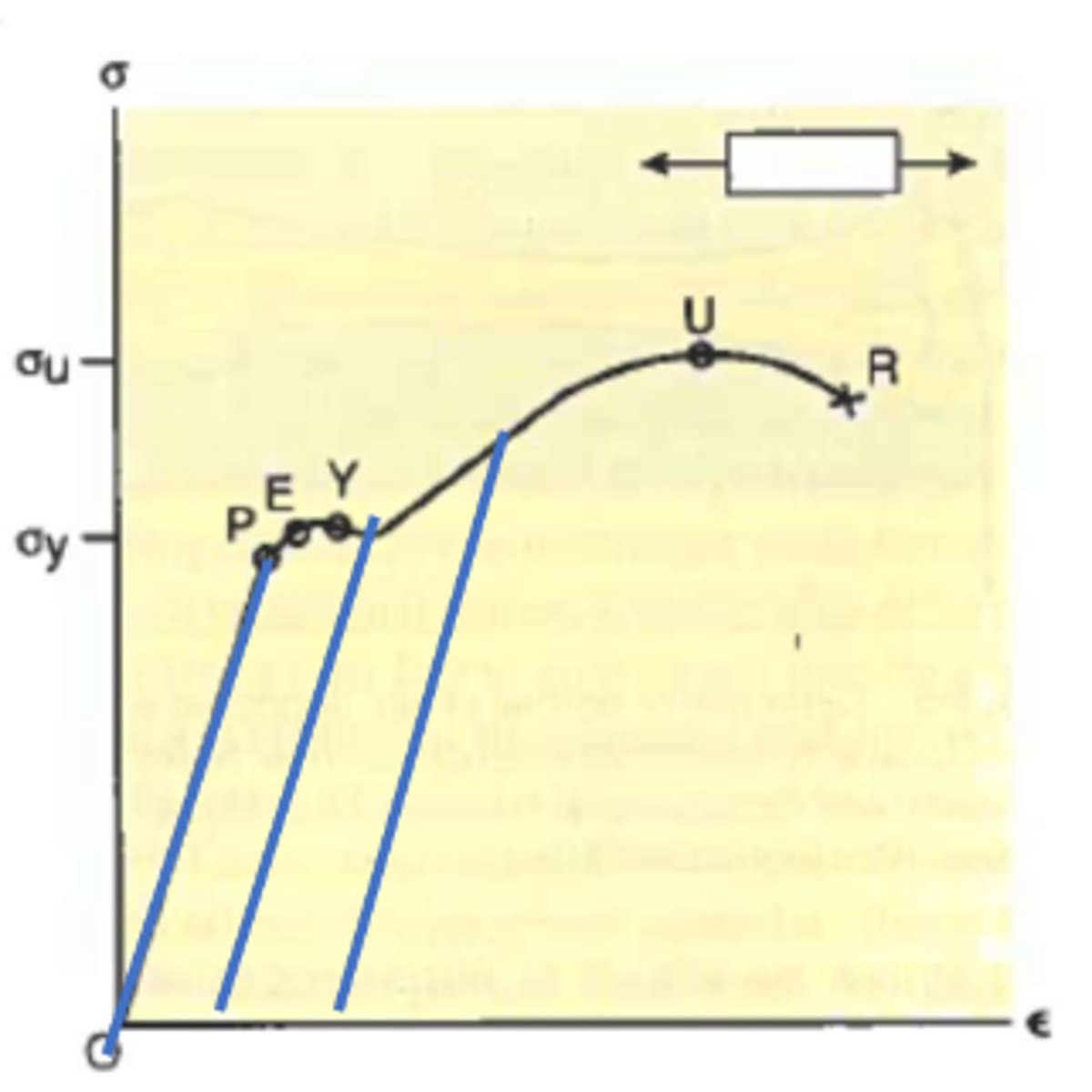
U
Highest stress point on the diagram.

σᵤ
Ultimate strength of the material.

R
Rupture or failure point.
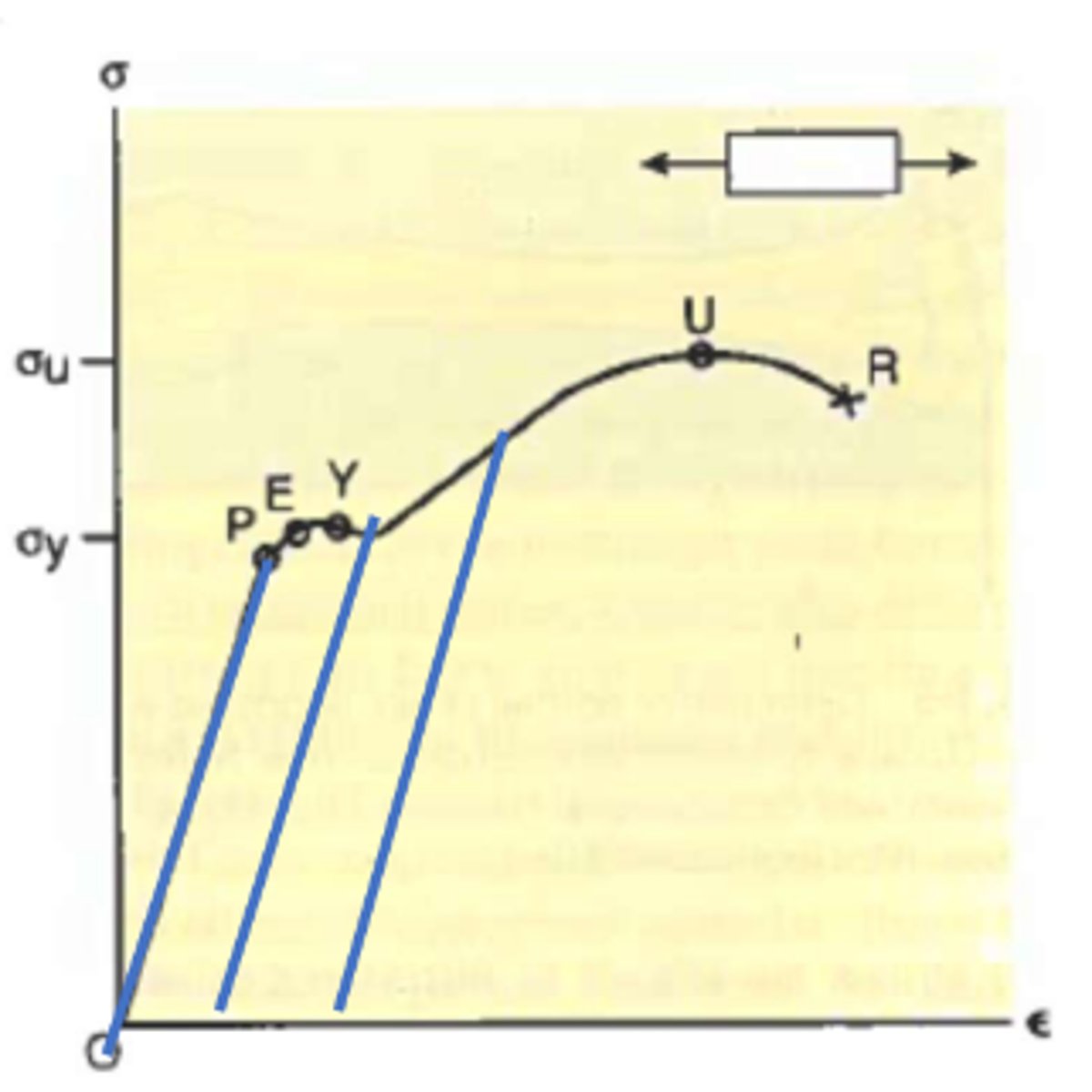
Strength
Load at ultimate stress point; often at or just before failure point.
Stiffness
Load required to deform the structure a given amount = load/elongation.
Slope
Stiffness is a ratio specific to each sample specimen; it is ____________________________ of stress-strain curve.
Compliance
Measure of ease of deforming of a specific structure; reciprocal of stiffness.
Toughness
Area under the stress-strain curve; defined as work or energy.
Young's (elastic) modulus
E=σ/ε

Small
E is usually a large number because strain is generally ____________________________.
Flexible
When strain is relatively large, E is small, implying a gentler slope and tissue/material is more __________________________.
Solids
Everything but fluids; various stress/strain relationships.
Steel alloy
Ductile material where stress and strain can be linear.
Uniform
Nothing __________________________ with solids group.
Glass
Brittle → little strain occurs for stress application
Elasticity
A property of solids; perfectly linear relationship (i.e., spring).
Elasticity
Ability of material to return to starting size and shape when load is removed.
Independent
Elasticity is time _________________________________ and has a predictable relationship (F=kd).
Viscoelastic materials
High liquid content, usually water resulting in fluid flow when material is loaded; ALSO have some properties that are more "solid-like".
Viscosity
Resistance to flow.
Increased
Increased viscosity leads to __________________________ slope in elastic region of stress-strain curve.
Viscoelastic materials
All biomaterials are _______________________________.
Predictive
Viscoelastic materials are not "ideal" in the sense of material properties being _________________________; BUT these materials serve our bodies well (EXCEPT when they don't).
Combination
Viscoelastic materials have a _______________________ of viscous and solid (elastic) response. Depending on the material, the tissue will respond more with elastic or viscous properties.
Time; rate
Viscoelastic materials are ____________________ and ______________________ dependent.
Solid
A __________________________ material will deform to a certain extent when an external force is applied.
Fluid
A continuously applied force on a __________________________ body will cause a continuous deformation (known as flow).
Viscosity
Property that is the quantitative measure of resistance to flow.
Hysteresis
Change in the stress/strain relationship with elongation and relaxation.
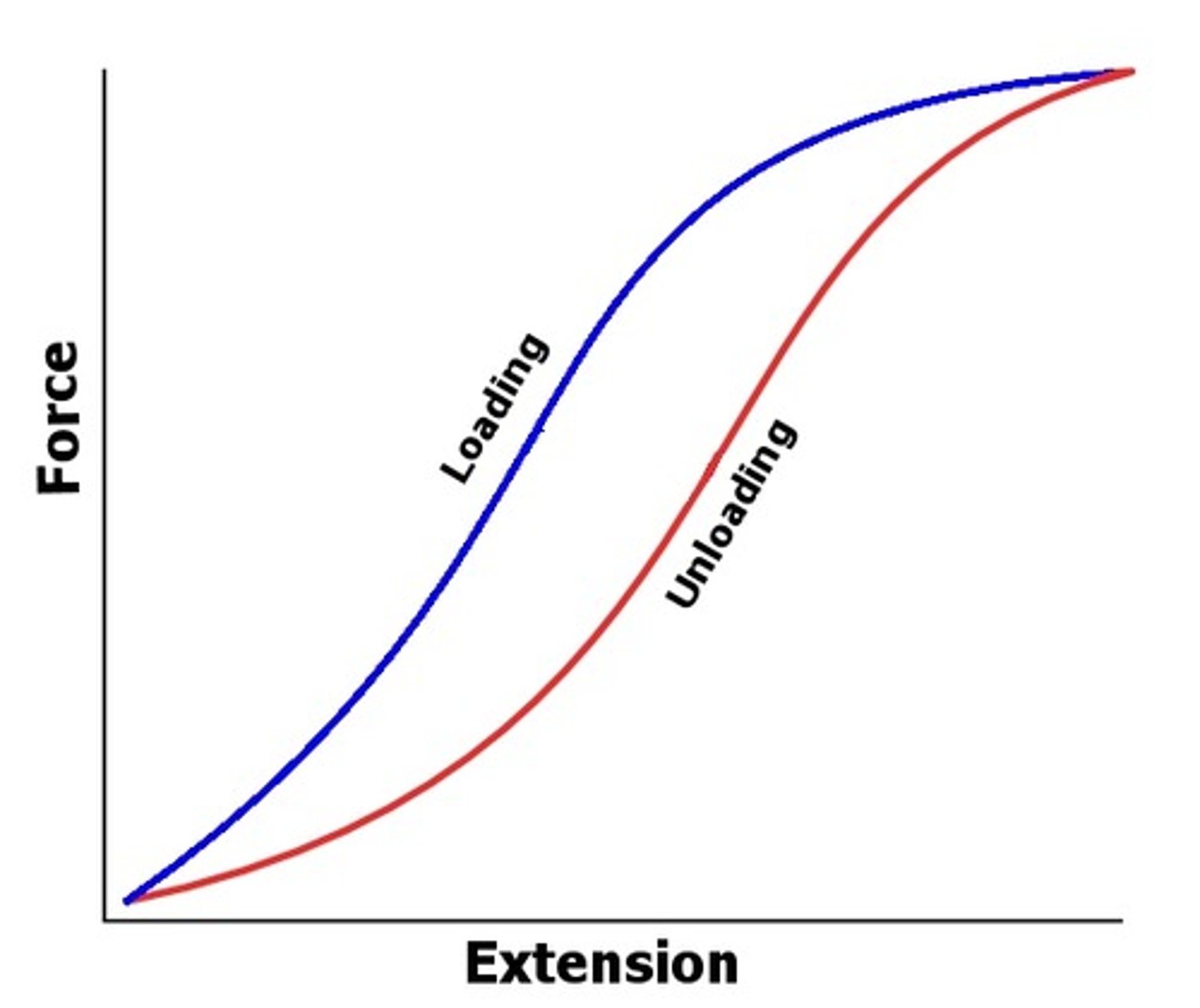
Greater
__________________________ energy is absorbed during loading than is released during unloading.
Heat
The curve will move to the right during hysteresis. The area within the loop represents the energy dissipated as ____________________________ during the process.

Lag
This __________________________ in rebounding is hysteresis.

Elastic; viscous
Warm-ups prior to exercise are a good idea because they warm the tissues, making them more ______________________ and less __________________________.
Rebound resilience
Ratio of area under unloading curve to area under loading curve expressed as a percentage.
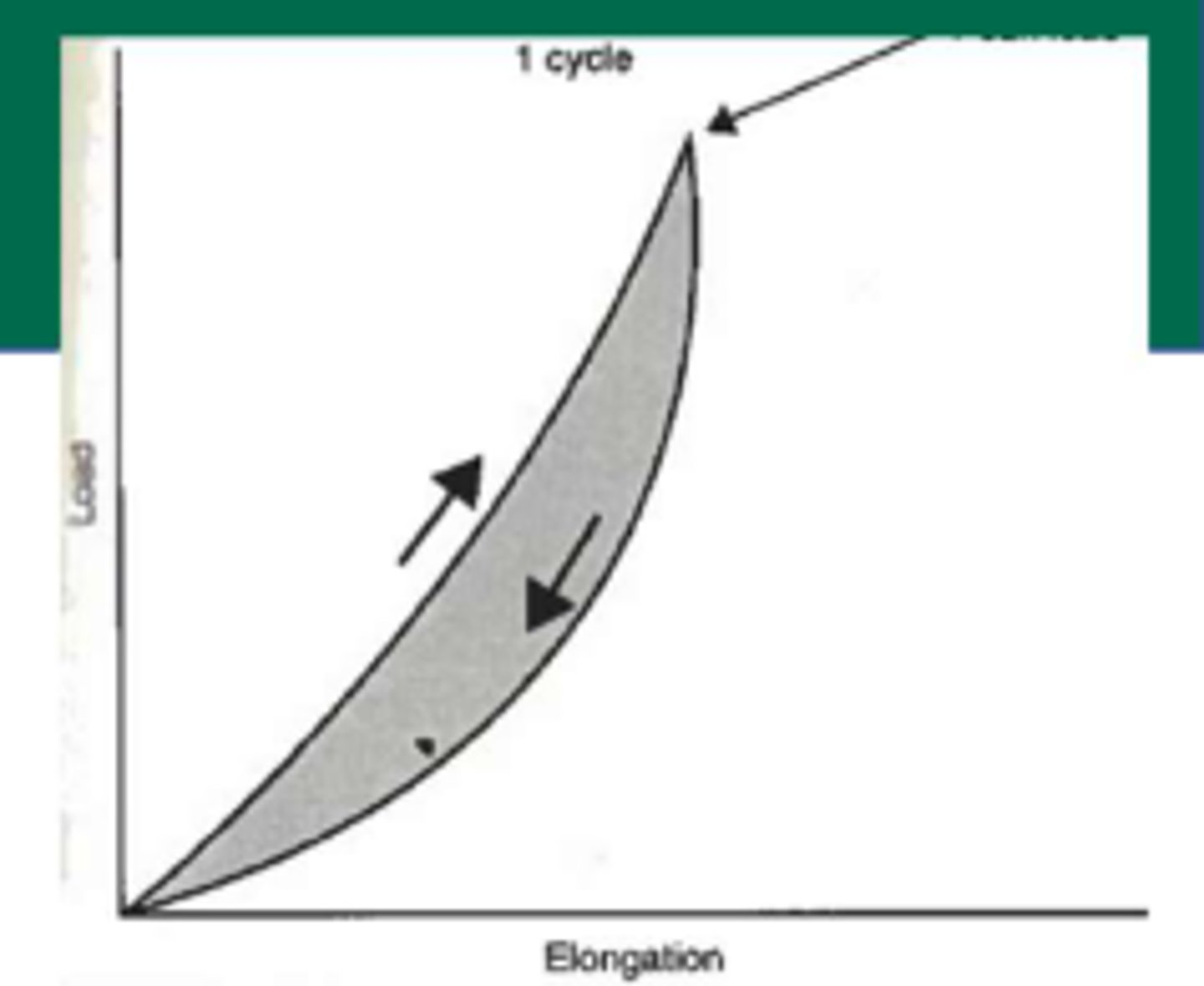
Elastic
When rebound resilience ratio is 1, the material is purely linearly _________________________.
Repetitions
Rebound resilience is effected by ______________________ and temperature.
Reduced
If hysteresis is ________________________, then the response of the tissue is quicker and would become more "ideal".
Stiffness
Decrease in hysteresis implies decrease in ____________________________.
Creep
Maintain load over time and observe reaction.
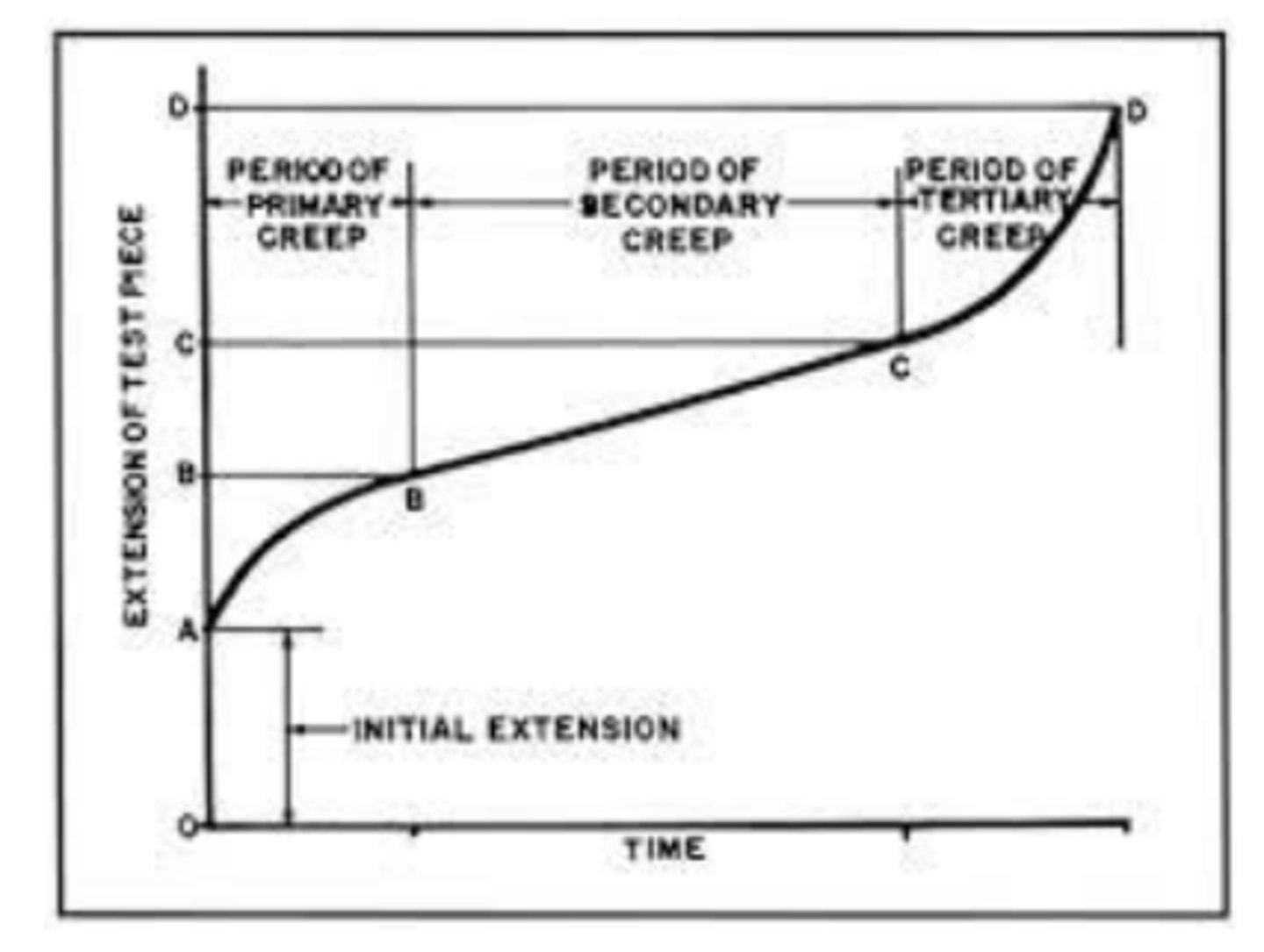
Elongates
Creep: Change in elongation or strain over time → tissue _____________________________.
10 minutes
Creep: Change occurs mostly within the first __________________________ (2 minutes in ligament).
Cyclic creep tests
Seem to mimic athletic activities better (hold is short but up to 100 cycles would be performed) → examines fatigue characteristics of viscoelastic materials.
Increased
Increased time of load application leads to __________________________ deformation.
Arthritis
Resting on hip ligaments → Degradation of fibrocartilage labrum and articular cartilage → _________________________
ROM
Stretching elbow contracture to second resistance and beyond → Greater ________________________________
End
In regard to creep, there is no increase in force with time, but ROM increases so elongation/deformation is greatest at _________________________ of range.
Stress relaxation
Maintain elongation over time and observe the load changes. Load gradually decreases with time.

6-8 hours
Stress relaxation changes take _______________________ to occur in biological tissue.
Cartilage
Stress relaxation is not well tested; not as well understood how it relates to biological tissue; only time this may occur in the body is with ____________________________.
Plastic region; elastic region
Stretching occurs in _____________________________ for muscles, whereas strengthening occurs in ____________________________.
Uncrimping
When collagen fibers go from being "wavy" to straight with an applied stress.
Viscoelasticity
Primary mechanism to increase tissue length.
Elastic deformation
Ability of the material to return to its resting length after a load has been applied.